#philippe duc d'orléans
Text
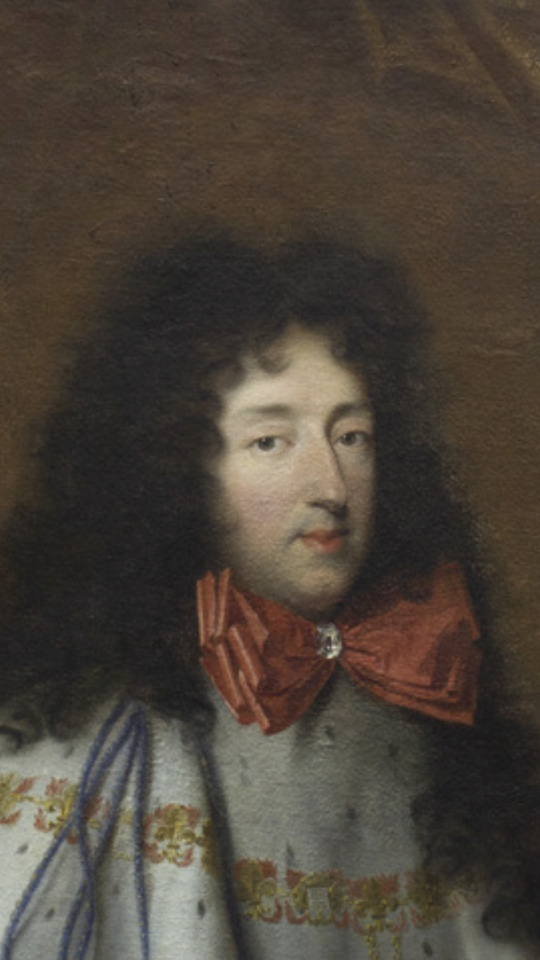

obsessed with how much Philippe looks like the og™️ Philippe, they really cast him perfectly
#versailles#philippe duc d'orléans#alexander vlahos#have i mentioned i'm in love w his hair#both historical and the show version if we're being honest here
40 notes
·
View notes
Text

Louis, Anne, Philippe, Mazarin, Beaufort, and most importantly, Pistache
#dumas#vingt ans après#twenty years after#the three musketeers#les trois mousquetaires#louis xiv#anne d'autriche#philippe d'orléans#jules mazarin#francois de bourbon-vendôme#duc de beaufort#17th century#historical clothing
2K notes
·
View notes
Text

Philippe I, Duke of Orléans. Circle of Pierre Mignard.
#royaume de france#maison de bourbon#bourbon orleans#philippe de france#duc d'anjou#duc d'orléans#monsieur#vive le duc#versailles#pierre mignard#in armour#museo del prado#maison d'orléans
15 notes
·
View notes
Text
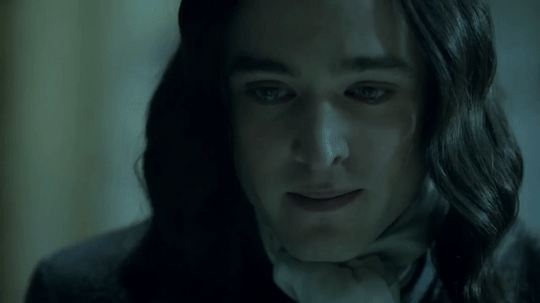

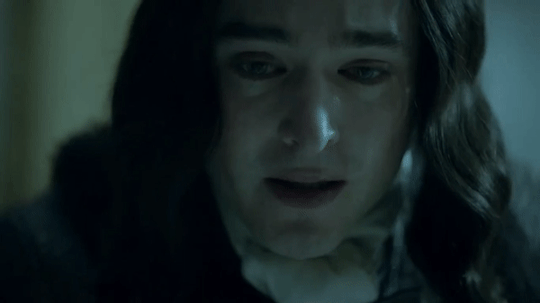
#versailles#versailles gif#philippe d'orléans#philippe d'orléans gif#philippe of orleans#philippe of orleans gif#duc d'orléans#duke of orleans#alexander vlahos#alexander vlahos gif
47 notes
·
View notes
Text
The (early) Relationship between Georges de La Fayette and Louis Philippe I
Lately I have gone back to “the roots” so to speak – in other words, I have read the French version of La Fayette’s memoirs (and again realized that the first English version I read was somewhat strange.)
While reading, I found this passage in the fifth volume:
Je ne con les ducs d'Angoulême et de Berry; mais la manière dont le duc d'Orléans demanda de mes nouvelles à mon fils, qu'il avait vu aux États - Unis , me fit un devoir d'aller chez lui
My translation:
I don't know the dukes of Angoulême und de Berry; but the manner in which the Duc d’Orléans inquired after my son, whom he had seen in the United States, made it my duty to go to him.
Most of you are probably aware of the fact that the relationship between the La Fayette’s and the d’Orléans’ often was … interesting to say the least. The Marquis de La Fayette and the Ducs father, Louis Philippe II, Duke of Orléans or “Philippe Égalité” really did not get along during the French Revolution. In that context it is quite interesting to see how their sons connected.
During the course of the French Revolution Louis Philippe II was executed via the guillotine and his sons fled the country. His oldest son, the new Duc d’Orléans, the one mentioned in the quote above, lived in Switzerland before moving to England and later spending two years in North America, mostly in Philadelphia. In April of 1797 he and two of his brother visited Mount Vernon in Virginia before embarking on a three-month trip of the American backcountry. By October they had concluded their trip and George Washington noted in his diary for October 30, 1797:
30. Wind brisk from No. Wt. & cold. Mer. at 54. Doctr. Stuart went away after breakfast. Mr. Cottineau & Lady, Mr. Rosseau & Lady, the Visct. D’Orleans, & Mr. De Colbert came to Dinner & returned to Alexa. afterwards. A Mr. Stockton from N. Jerseys came in the afternoon.
“[Diary entry: 30 October 1797],” Founders Online, National Archives, [Original source: The Diaries of George Washington, vol. 6, 1 January 1790 – 13 December 1799, ed. Donald Jackson and Dorothy Twohig. Charlottesville: University Press of Virginia, 1979, pp. 265–266.] (09/29/2022)
By late 1797, Georges and Felix Frestel had begun their preparations to return to Europe but Georges would not be reunited with his family prior to February of 1798. I am therefor not quite sure if Georges and the Duc d’Orléans met during one of the described instances or elsewhere. Georges certainly had spent his fair share of time in Philadelphia as well.
One way or the other, the two young Frenchman in exile met and seemingly got along quite nicely. I have sadly never found a statement by Georges himself on the meeting or their subsequent relationship.
#marquis de lafayette#la fayette#american history#french history#french revolution#history#1797#george washington#georges washington de lafayette#louis philippe#louis philippe i#duc d'orléans#founders online
13 notes
·
View notes
Text
"They were unhappy with my refusal"
It was Louis XIV's good fortune that the early years of his personal reign coincided with the end of nearly a century of intermittent civil strife. Condé's crushing defeat during the Fronde was a lesson few would forget, and it underlined, if that were necessary, that the loss of favour or dissatisfaction with those in whom the monarch placed his trust was no longer a justification for plots or rebellion. Cold steel had played the dominant part in that transition, but it was accompanied by changing attitudes among the elites who had also suffered grievously from these violent struggles and both the monarchy and the nobility needed time to adjust to the new realities of power. Yet for all his advantages, Louis XIV was still confronted by the often-inflated ambitions of his relatives, who were constantly hoping for military commands, governorships, or other offices, and he could never forget that they were liable to interpret any refusal as a personal rebuff. In his memoirs the king had described the court early in his reign as an agitated forum where habits of negotiation with ministers had created a climate where favour was "demanded and snatched rather than awaited, always having repercussions from one to another, no longer obliging anyone, only good for mistreating those whom one wished to refuse." The challenge for the young monarch was to educate the grandees in the need for patience and to convince them that he would reward loyalty and obedience. To achieve that aim, he needed to show a capacity to impose order on his own family, which in many ways set the tone for the rest of the court, and even for a monarch as charismatic and conscientious as Louis XIV it was impossible to satisfy everyone. He was constantly challenged by the demands or actions of others, and the reality of court life was very different from the serene façade that is often portrayed.
In his memoirs the king referred to an incident in 1666 when his brother, Philippe duc d'Orléans, known by his title of Monsieur, had requested the governorship of Languedoc. Well aware that this populous and wealthy province had been the springboard for previous revolts the king had already refused the same request in 1660, and he again disappointed his brother arguing that he did not wish to see "the great governorships in the hands of the sons of France, who for the good of the state, must never have any other refuge than the court nor other place of safety than in the heart of their brother." While that argument might seem prudent, Monsieur had no choice other than to insist in order to uphold his own rank and prestige because, although the precedent might not help his case, the recently deceased Gaston d'Orléans had once held that governorship. The king's rebuff was keenly felt, and, according to Louis XIV, his brother and his wife, Henriette d'Angleterre, egged on by the
"fine words of some troublemakers, displayed in various ways that they were unhappy with my refusal. For my part, without giving any sign of having perceived anything untoward, I left them the time to think better. And, in fact, coming back to themselves soon afterward, they both asked me to forgive them for the hot-headedness that they had shown."
Louis XIV's equanimity had stood him in good stead because, as with their father and Gaston, the potential for serious conflict between the royal brothers was always present. As recently as the spring of 1658, when the king had fallen gravely ill while on campaign, rumours had been circulating of aristocrat malcontents flocking to Monsieur in the hope of toppling Cardinal Mazarin.
According to one scholarly account, a desire to avoid a repetition of the struggles between Louis XIII and Gaston had led first Mazarin and subsequently Louis XIV to follow a conscious policy designed to crush the personality and ambitions of Monsieur. It is true that despite living most of their lives in close proximity the brothers were never intimate, and Monsieur was clearly forced to accept a subordinate position. Some of the latent political tension was defused by the birth of a dauphin in November 1661, which created a buffer between the younger brother and the throne, even if it could not prevent regular and sometimes angry disputes. Yet the idea of the king systematically undermining Monsieur is far from compelling.
Julian Swann- Exile, Imprisonment, or Death: the Politics of Disgrace in Bourbon France
#xvii#julian swann#exile imprisonment or death: the politics of disgrace in bourbon france#louis xiv#louis ii de bourbon condé#la fronde#philippe de france duc d'orléans#monsieur#gaston d'orléans#henriette d'angleterre#cardinal mazarin
5 notes
·
View notes
Text

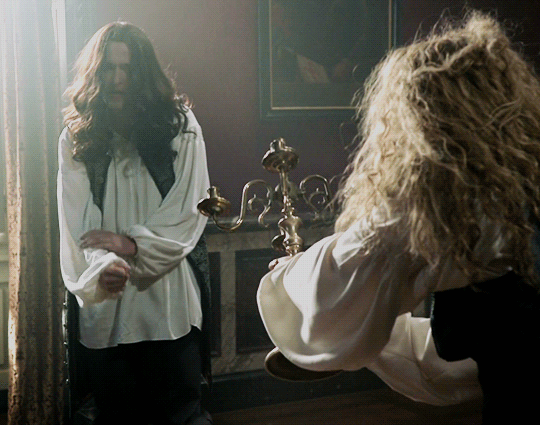
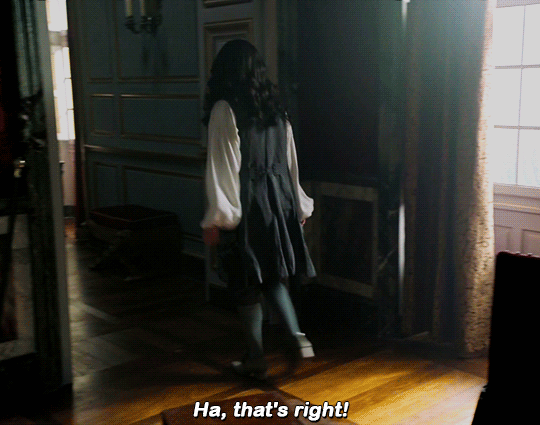
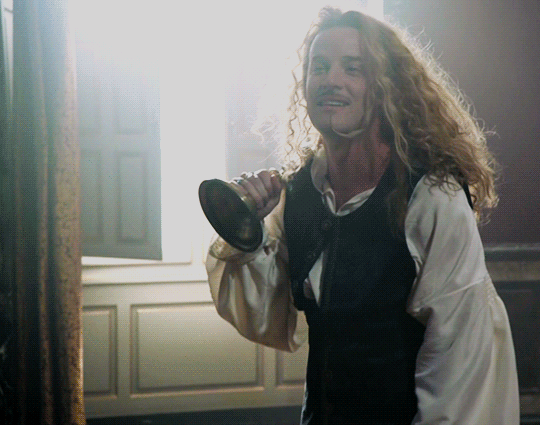
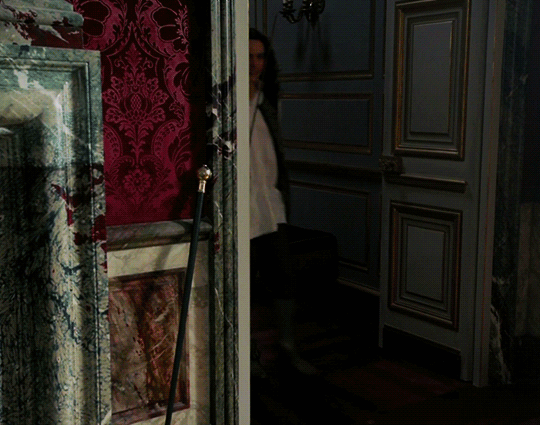

Evan Williams & Alexander Vlahos as Chevalier de Lorraine & Philippe I, Duc d'Orléans in VERSAILLES (2015-2018) – 2x04 Miasma
#chevalier de lorraine#philippe d'orléans#versailles#monchevy#versaillesedit#perioddramaedit#weloveperioddrama#userrobin#my gifs#feeling unwarrantedly delulu unhinged after tonight's shift#so here have this 👁👄👁
79 notes
·
View notes
Text

January 7, 2024: Welcome to 2024!
Okay, I have been writing (and there is a LOT). However, I've had to deal with bedbugs for the past six months (and going). I have no time to go into the logistics (and the blame sits squarely on the shoulders of my stepsister), but I'm here to have some fun and tell you about what is going on with the HOB.
Without too much detail of the private conflicts that plagued this project since its creation upon the heels of the success of @tkwrtrilogy2, @tkwrtrilogy, and @tkwrtrilogy3, there has been an overhaul. Also, the latest addition to the trilogy will make its debut on Wattpad (but will come here eventually).
First, the OVERHAUL: Welcome to the HOB Universe.

You're asking yourself: WTF is this? Well, the best explanation of it can be seen here. All that applies is that this takes place in 17th-century France rather than Middle Earth.
I will be overhauling the Tumblr for @lesecretdelamaisondubourbon. There is a reason, but to find that out, you'll have to read the memoir about all of this (TBA). Either way, it comes on the heels of family drama and the death of a friendship that was supposed to last forever (according to her). But, the book (known by the title XIV) is going up on Wattpad, so while it is being overhauled over here, you can read it in its proper order over there.

XIV: The life and times of Louis XIV as told by Louis XIV--if you haven't figured that out yet. It is part of Book III; his father's story (@thesecretofthehouseofbourbonbook) is Book II.
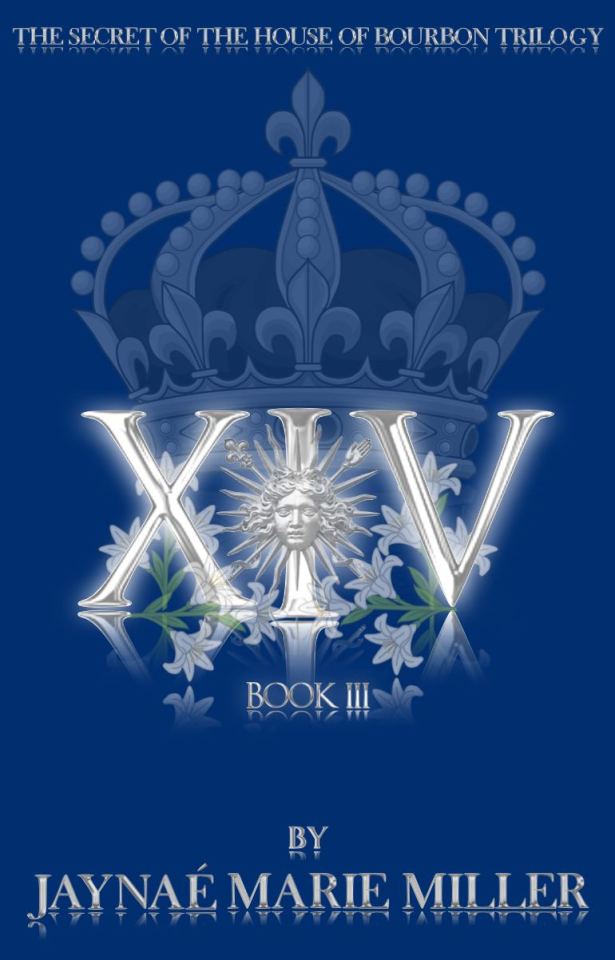
Now, about that other book: The original title of the book (that was going to be written by my former co-author) was Monsieur. If you guess that the book was going to be about Philippe I, Duc d'Orléans (younger brother of Louis XIV), you were right.
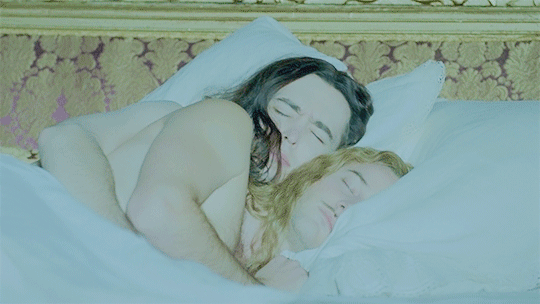
If you think this is a retelling of centuries of rumor and innuendo, you would be wrong. This will be his story--told by Philippe. Under the title of Son of France (Fils de France in French), this is the story you were never told. After 383 years, it is time.
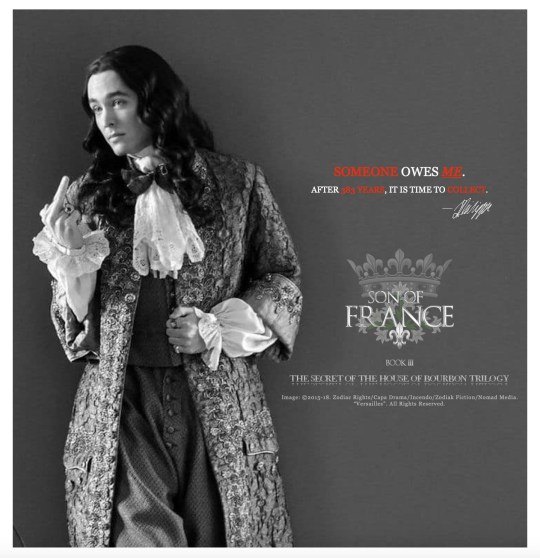

His story officially began in January of 2024, and he will be following his brother Louis here once he debuts on Wattpad. Stay tuned for more. He's part of the universe now.
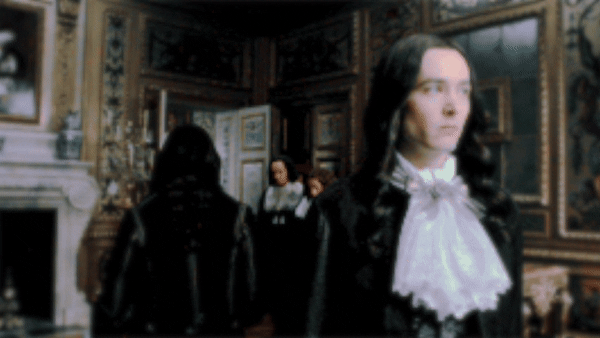
#historical drama#historical fiction#xiv#louis xiv#monsieur#philippe i#duc d'orleans#books#novels#wattpad#hobnewsfeed#the official hob#the official hob trilogy#hob literary universe#literature#writers on instagram#writers on twitter#writers on tumblr#writers on wattpad#writers on wordpress
7 notes
·
View notes
Text
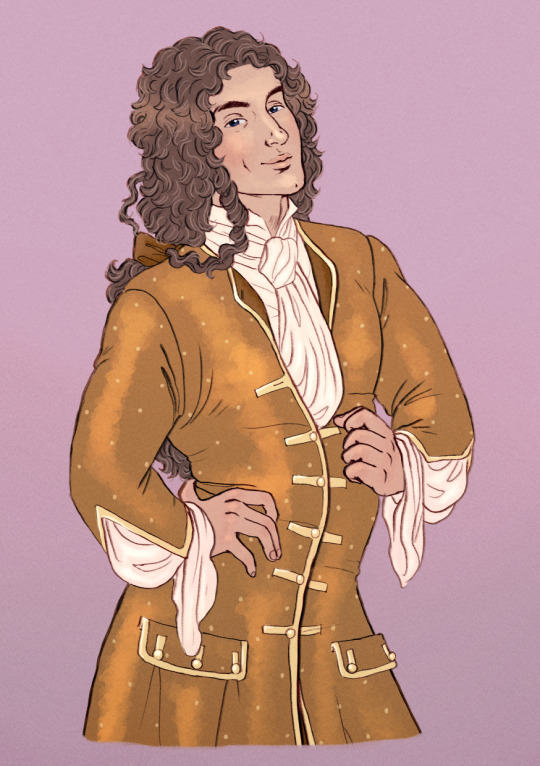
Philippe d'Orléans, Duc de Chartres
The Duc de Chartres is Gonzague’s other close friend, a royal connection the Prince made sure to acquire by any means possible. It turned out all it took was to be sufficiently entertaining to the King’s nephew.
Chartres is an easy friend to have, very little seem to bother him.
A libertine, he likes to indulge with parties and numerous lovers, making him infamous in court. In reality, this outrageous reputation hides a bright mind and lofty ambitions.
43 notes
·
View notes
Text

"Commode" attribuée à Charles Cressent en bois satinés et amarantes, marbre et bronzes dorés (circa 1725) devant "Daphnis et Chloé : Les Vendanges" tapisserie de la Manufacture des Gobelins d'après Philippe, Duc d'Orléans en collaboration avec Antoine Coypel (circa 1718-20) présentées à l'exposition " La Régence à Paris (1715-1723) - L'Aube des Lumières" au Musée Carnavalet, novembre 2023.
5 notes
·
View notes
Text
Chapters: 1/1
Fandom: Cartouche: Prince des faubourgs | Cartouche: Prince of the Streets (Cartoon)
Rating: General Audiences Warnings: No Archive Warnings Apply
Characters: Nero Falconi, Philippe II duc d'Orléans
Summary:
Les duels étant interdits sur ordre du roi, Falconi paie chèrement son affrontement avec le Lorrain. Abandonné dans une étroite cellule du Grand Châtelet, il attend des jours meilleurs qui, semble-t-il, ne viendront pas. Alors que tout semble sans issue, quelqu'un lui tend la main.
________
Ça faisait un moment que je voulais écrire un machin qui se passerait un peu après le duel!
#cartouche prince des faubourgs#je pouvais pas laisser passer l'occasion de mentionner les rumeurs d'empoisonnement même si ça colle pas à la timeline#ça m'amusait d'écrire un truc avec ces deux-là!#je sais pas si je suis exactement arrivée à la vibe que je voulais mais ça m'a amusé alors voilà quoi#flashbic writes stuff#shout out à Jean Leloup pour le titre parce que pour cette fois du Pierre Lapointe ça collait pas du tout
2 notes
·
View notes
Text

Equestrian portrait of Louis-Philippe I (1773-1850). By Horace Vernet.
#equestrian portrait#royaume de france#horace vernet#maison d'orléans#bourbon orleans#louis philippe i#duc d'orléans#roi de france#vive le roi
9 notes
·
View notes
Text
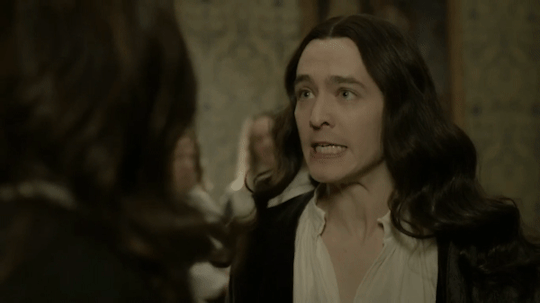
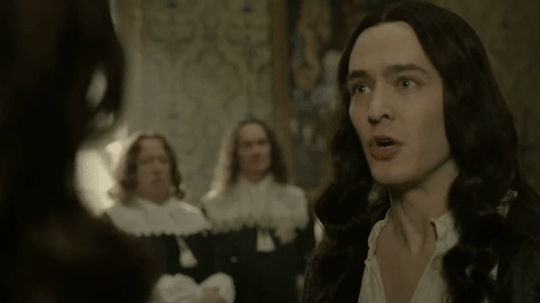
#versailles#versailles gif#philippe d'orléans#philippe d'orléans gif#monsieur#alexander vlahos#alexander vlahos gif#philippe of orleans#philippe of orleans gif#duc d'orléans#duke of orleans
31 notes
·
View notes
Note
I hope you'll enjoy: me at the bar tonight: listen I know we're here for something else but can I PLEASE talk about the pasithea powder someone set a timer I promise not to go over three minutes (I did. by quite a lot)
Given that this has been us, to each other, and also to innocent parties, on MULTIPLE occasions, both about The Pasithea Powder and also about topics as various as Shameless, Supernatural, Philippe I Duc d'Orléans, The Untamed, Natalie Barney, etc. etc. etc., we fully approve. And also thank you for spreading the good news.
9 notes
·
View notes
Text
THIS DAY IN GAY HISTORY
based on: The White Crane Institute's 'Gay Wisdom', Gay Birthdays, Gay For Today, Famous GLBT, glbt-Gay Encylopedia, Today in Gay History, Wikipedia, and more


1644 – The Abbé de Choisy, also known as François Timoléon (d.1724), born in Paris, among the notable Frenchmen of the seventeenth century, has left for posterity a vivid firsthand description of a strong cross-gender wish. During his infancy and early youth, his mother had attired him completely as a girl. At eighteen this practice continued and his waist was then "encircled with tight-fitting corsets which made his loins, hips, and bust more prominent." As an adult, for five months he played comedy as a girl and reported: "Everybody was deceived; I had [male] lovers to whom I granted small favors."

de Choisy as a woman
In 1676, he attended the Papal inaugural ball in a female attire. In 1687, he was received into the Académie de France. In 1696 he became the Ambassador of Louis XIV to Siam.
Regarding his gender identity he wrote,
I thought myself really and truly a woman. I have tried to find out how such a strange pleasure came to me, and I take it to be in this way. It is an attribute of God to be loved and adored, and man - so far as his weak nature will permit - has the same ambition, and it is beauty which creates love, and beauty is generally woman's portion … . I have heard someone near me whisper, "There is a pretty woman," I have felt a pleasure so great that it is beyond all comparison. Ambition, riches, even love cannot equal it …
In 1676, he attended the Papal inaugural ball in a female attire. In 1687, he was received into the Académie de France. In 1696 he became the Ambassador of Louis XIV to Siam.
Regarding his gender identity he wrote,
I thought myself really and truly a woman. I have tried to find out how such a strange pleasure came to me, and I take it to be in this way. It is an attribute of God to be loved and adored, and man - so far as his weak nature will permit - has the same ambition, and it is beauty which creates love, and beauty is generally woman's portion … . I have heard someone near me whisper, "There is a pretty woman," I have felt a pleasure so great that it is beyond all comparison. Ambition, riches, even love cannot equal it …


1667 – Louis de Bourbon, Légitimé de France, Count of Vermandois (d.1683) was the eldest surviving son of Louis XIV of France and his mistress Louise de La Vallière. He was sometimes known as Louis de Vermandois after his title. He died unmarried and without issue.
Louis de Bourbon was born at the Château de Saint-Germain-en-Laye. He was named after his father. Like his elder sister, Marie Anne de Bourbon, who was known at court as Mademoiselle de Blois, he was given the surname of de Bourbon not de France as a result of his illegitimacy. As a child, he called his mother Belle Maman because of her beauty. Louis was legitimised in 1669, at the age of two, and was given the title of comte de Vermandois and was made an Admiral of France.
In 1674, his mother entered a Carmelite convent in Paris, and took the name Sœur Louise de la Miséricorde. Afterwards, they saw very little of each other. From his mother and his father, Louis had five full siblings, many of whom died before his birth.
After his mother left, Louis lived at the Palais Royal in Paris with his uncle, Philippe of France, duc d'Orléans, and his wife Elizabeth Charlotte of the Palatinate. At the Palais-Royal, he became very close to his aunt despite her well-known dislike of Louis XIV's bastards. The affection the aunt and nephew had for each other never diminished.
While he was at the court of his libertine and homosexual uncle, he met the Chevalier de Lorraine, his uncle's most famous lover. It is said that the young count was seduced by the older chevalier and his set (including the Prince of Conti) and began practicing le vice italien (the contemporary appellation for homosexuality).
Louis XIV decided to exile his son and the Chevalier de Lorraine.
In order to cover up the scandal, it was suggested that the boy be married off as soon as possible; a bride suggested was Anne Louise Bénédicte de Bourbon; Louis was exiled before anything could materialise.
In June 1682, Louis was exiled to Normandy. In order to smooth things over between father and son, his aunt Elizabeth Charlotte of the Palatinate suggested to the king that Louis be sent as a soldier to Flanders, which was then under French occupation. The king agreed with the suggestion and his son was sent to the Siege of Courtray. It was there that Louis fell ill.
Despite his illness, Louis was desperate to regain his father's love and continued to fight in battle regardless of advice given by the royal doctor and the marquis de Montchevreuil that he return to Lille in order to recuperate.
Louis died on 18 November 1683, at the age of sixteen. He was buried at the cathedral at Arras. His loving sister and aunt were greatly impacted by his death. His father, however, did not even shed a tear. His mother, still obsessed with the sin of her previous affair with the king, said upon hearing of her son's death: I ought to weep for his birth far more than his death.
Louis was later suspected of being the Man in the Iron Mask.


Gandhi and Kallenbach
1869 – Mohandras Mahatma Gandhi was an Indian lawyer, anti-colonial nationalist, and political ethicist, who employed nonviolent resistance (satyagraha) to lead the successful campaign for India's independence from British rule, and in turn inspired movements for civil rights and freedom across the world. The honorific Mahatma ("great-souled", "venerable"), first applied to him in 1914 in South Africa, is now used throughout the world.
Born and raised in a Hindu family in coastal Gujarat, western India, Gandhi trained in law at the Inner Temple, London, and was called to the bar at age 22 in June 1891. After two uncertain years in India, where he was unable to start a successful law practice, he moved to South Africa in 1893 to represent an Indian merchant in a lawsuit. He went on to stay for 21 years.
It was in South Africa that Gandhi raised a family, and first employed nonviolent resistance in a campaign for civil rights. In 1915, aged 45, he returned to India. He set about organising peasants, farmers, and urban laborers to protest against excessive land-tax and discrimination. Assuming leadership of the Indian National Congress in 1921, Gandhi led nationwide campaigns for easing poverty, expanding women's rights, building religious and ethnic amity, ending untouchability, and above all for achieving Swaraj or self-rule.
Was Mahatma Gandhi gay? A Pulitzer-Prize winning author Joseph Lelyveld claims the god-like Indian figure not only left his wife for a man, but also harbored racist attitudes.
According to Lelyveld, his lover was Hermann Kallenbach, a German-Jewish architect and bodybuilder. The couple built their love nest during Gandhi's time in South Africa where he arrived as a 23-year-old law clerk in 1893 and lived for 21 years.
At the age of 13 Gandhi had been married to 14-year-old Kasturbai Makhanji, but after four children together they broke up so he could be with Kallenbach. As late as 1933 Gandhi wrote a letter telling of his unending desire and branding his ex-wife "the most venomous woman I have met." Kallenabach emigrated from East Prussia to South Africa where he first met Gandhi. The author describes Gandhi's relationship with the man as, "the most intimate, also ambiguous relationship of [Gandhi's] lifetime."
Much of the intimacy between the two is revealed in Kallenbach's letters to his Indian friend after Gandhi left his wifen 'Ba' — an arranged marriage — in 1908 for Kallenbach, a lifelong bachelor, according to the book.
The source of much of the detail of their affair was found in the "loving and charming love notes" that Gandhi wrote to Kallenbach, whose family saved them after the architect's death. They eventually landed in the National Archives of India. Gandhi had destroyed all those from Kallenbach.
It was known that Gandhi was preoccupied with physiology, and even though he had a "taut torso," weighing 106 to 118 pounds throughout his life, the author says Gandhi was attracted to Kallenbach's strongman build.
In letters, Gandhi wrote to Kallenbach, "How completely you have taken possession of my body. This is slavery with a vengeance."
"Your portrait (the only one) stands on my mantelpiece in the bedroom," he writes. "The mantelpiece is opposite the bed."
The pair lived together for two years in a house Kallenbach built in South Africa and pledged to give one another "more love, and yet more love."
Gandhi implored Kallenbach not to "look lustfully upon any woman" and cautioned, "I cannot imagine a thing as ugly as the intercourse of men and women."
By the time Gandhi left South Africa in 1914, Kallenbach was not allowed to accompany him because of World War I. But Gandhi told him, "You will always be you and you alone to me…I have told you you will have to desert me and not I you."
Kallenbach died in 1945 and Gandhi was assassinated in 1948


1985 - Rock Hudson, American actor died (b.1925); Hudson's death from HIV/AIDS changed the face of AIDS in the United States.


1997 – "Variety" objected to the Motion Picture Association of America's decision to give the movie "Bent" an NC-17 rating, pointing out that the sex scenes were far less graphic than heterosexual sex scenes in movies which receive R ratings.


2 notes
·
View notes
Text
23 / 08 / 2022
🇫🇷 FRANÇAIS / FRENCH 🇫🇷
Aujourd'hui je lance une nouvelle série d'articles. Après RECOMMANDATION DE FILM / SÉRIE TÉLÉVISÉE, HOMME DU JOUR, et PERSONNAGE DU JOUR, voici le premier numéro de COUPLE GAY DU JOUR.
Je suis gay donc forcément je vais parler de couple gay de personnage fictifs ou pas, mais plutôt des personnages issus de films et de séries télévisées (et peut-être de livres). Les deux hommes formant le couple gay dont je parlerais ne seront pas forcément gay eux-mêmes (par exemple il peut y avoir un gay en couple avec un homme bisexuel), mais l'idée est de parler de couples de fictions que j'apprécie, qui m'inspire et me font rêver. Peut-être que cela vous donnera envie de voir les films et les séries télévisées dont ils sont issus, comme lorsque je vous recommande des séries TV ou des films.
Les couples dont je vais parler ne sont pas apparaître par ordre de préférence.
COUPLE GAY DU JOUR #1 : MONCHEVY
Philippe d'Orléans (Alexander VLAHOS) et le Chevalier de Lorraine (Evan WILLIAMS) - série télévisée Versailles (2015 - 2018)

Phillipe d'Orléans et le Chevalier de Lorraine sont deux personnages principaux de la série Versailles. Composée de 3 saisons, la série télévisée Versailles raconte une partie du très long règne de Louis XIV de France (joué par Georges Blagden). À chaque saison, il y a un antagoniste différent qui complote contre le Roi, et chaque saison couvre une période différente du règne de Louis XIV.
On suit la vie à la Cour, et tous les personnages tournent autour de Louis XIV. Bien rythmée, très jolie à régarder car les costumes et les décors sont plutôt fidèles historiquement, la série invente plusieurs personnages intéressants à suivre. En revanche, pour ce qui est des personnages historiques, certains sont traités de manière caricaturales, voir totalement différente de comment ils étaient en réalité.
Pourtant, je pourrais parler longuement des choses fausses que la série invente, mais je préfère me consacrer à l'un des points positifs de la série : le couple formé par Philippe d'Orléans et le Chevalier de Lorraine. C'est le seul couple gay de la série mais ils apparaissent dans tous les épisodes, donc ils sont très présents et importants.
Lorsque commence la série, les deux hommes sont censés se connaître depuis au moins une dizaine d'années et sont déjà amoureux. Pour une fois, voilà un couple gay qui se connaît et qui s'aime, l'on n'a pas affaire à des scènes où ils apprennent à se connaître ou à se séduire. Alexander Vlahos interprète Monsieur le Duc Philippe d'Orléans, frère cadet du Roi Louis XIV. Evan Williams joue le rôle du Chevalier Philippe de Lorraine. Même s'ils portent le même prénom, le Chevalier est désigné sous le nom de "Chevalier" pour qu'on le reconnaisse.
Ces deux hommes sont des personnages historiques, en tout cas les personnages de la série sont inspirés de deux personnes ayant réellement existés. Philippe d'Orléans (né en 1640, mort en 1701) est le fils cadet de Louis XIII de France et Anne d'Autriche, il est donc le frère de Louis XIV. Le chevalier Philippe de Lorraine (1643 - 1702) est un noble français, il a rencontré le Prince Philippe vers 1658. La série commence vers 1668, ils se connaissent donc depuis une dizaine d'années : Philippe d'Orléans est censé avoir 27 ans, le Chevalier en a 24.
Dans la saison 1, le Chevalier complote pour faire de son amant Philippe le nouveau Roi de France. Il s'allie à d'autres nobles afin de destituer le Roi, et sa situation devient très compliqué. De son côté, le Duc d'Orléans (âgé de 28 à 30 ans) fait face à la jalousie qu'il éprouve pour le Roi.
Dans la saison 2, le Chevalier de Lorraine revient d'exil et se retrouve mêlé à l'Affaire des Poisons : c'est un scandale retentissant dans les années 1670 car des nobles français ont été accusés de consommer des poisons achetés à des sorciers et des sorcières. Quant à Philippe d'Orléans (âgé de 30 à 40 ans à peu près), il a enfin de plus en plus d'importance politique à la Cour.
Enfin, dans la troisième et dernière saison, Philippe (qui a entre 40 et 44 ans) va enquêter sur l'identité de l'homme au masque de fer, et le Chevalier de Lorraine se rapproche d'une fictive noble protestante à une période où le Roi fait arrêter les protestants de la cour s'ils ne se convertissent pas au catholicisme. Durant la saison 3, le couple s'éloigne mais il finit par se rapprocher, pour notre plus grand plaisir.
J'ai écrit l'âge qu'est censé avoir Philippe d'Orléans à chaque saison sauf qu'il n'y a aucune date donné dans la série, et les personnages vieillissent peu.
Dans la série télévisée comme dans la réalité historique, le Chevalier de Lorraine a eu de nombreux problèmes avec les deux épouses de Monsieur le Duc d'Orléans. Dans la première saison, il fait tout pour rendre malheureuse Henriette d'Angleterre, cousine et première épouse de Philippe d'Orléans. Dans la deuxième saison, il recommence avec la nouvelle épouse du Duc, Élisabeth-Charlotte de Bavière (surnommé Liselotte).
Pourtant, contrairement à la réalité historique, le Chevalier et Liselotte finissent par s'entendre plutôt rapidement, et deviennent même amis. Dans la vraie vie, ils ont attendus quatre ans avant la mort du duc pour enfin faire la paix. Le trio formé par le Duc d'Orléans, la Duchesse et le Chevalier est vraiment très drôle et très ambigu.
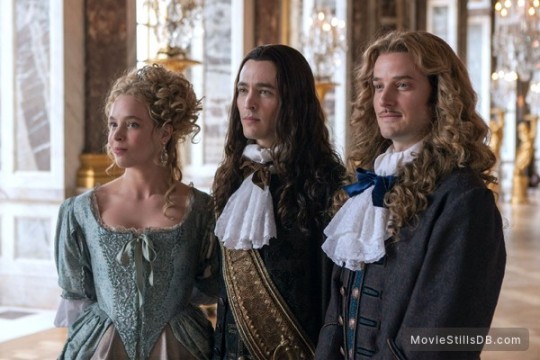
Le Chevalier de Lorraine est un grand homme blond musclé et le Duc est brun. Ils sont très différents surtout au niveau de la personnalité et de l'attitude.
Monsieur le Duc Philippe d'Orléans est un prince qui aime se travestir en femme, même si cela n'arrive qu'à peu de reprises dans la série télévisée. Il est censé avoir été élevé en fille par sa mère dans l'objectif de le rendre faible et soumis. Effectivement, il passait son temps à se consacrer à la mode et aux frivolités. Ce qui est bien dans la série Versailles c'est que la complexité de Philippe d'Orléans est montré. En effet, il était certes efféminé et frivole, passant beaucoup de temps à danser et à coucher avec ses amants, mais il était aussi un grand mécène, et surtout un valeureux guerrier qui a remporté plusieurs batailles au point de faire de l'ombre à son frère le Roi.
Dans la série, ce qui le rend complexe et intéressant c'est sa relation à son frère, mais revenons en à son couple avec le Chevalier. Tous deux sont très proches l'un de l'autre, mais c'est surtout le Chevalier qui se montre jaloux. Il n'est pas marié donc il n'aime pas voir le Duc passer du temps avec ses femmes. Il se montre très protecteur avec son amant, et complote pour qu'il soit Roi. Philippe était en effet plus populaire que le Roi car il passait plus de temps à Paris qu'à Versailles. Le Chevalier est un homme exubérant, qui aime se montrer et affiche sa supériorité. Il est manipulateur et arrogant, mais il cache une envie d'être aimé pour lui.
Ainsi, ce qui fait la beauté de ce couple c'est qu'ils sont vraiment fait l'un pour l'autre. Le temps et la politique les éloigne parfois mais ils finissent par se retrouver car ils s'aiment. Dans la réalité historique, certains historiens pensent que le Duc d'Orléans était sincèrement amoureux du Chevalier de Lorraine, mais que lui n'était pas amoureux et se servait de lui pour obtenir des faveurs. Il était pourtant un guerrier dont le roi se servait pour manipuler son propre frère.
Dans la série, le Duc Philippe évolue, car il est d'abord dominé et manipulé par le Chevalier, et il finit par ne plus dépendre de son amant.
Ce qui est bien, c'est que c'est un couple qui aurait pu exister de nos jours. Ils sont gay mais il leur arrive de coucher avec des femmes, ils sont ambitieux et mènent une carrière chacun de leur côté mais parfois en s'aidant l'un l'autre. Ils se disputent, couchent avec d'autres personnes, mais se réunissent.

Le couple formé par le Duc d'Orléans et le Chevalier de Lorraine a marqué l'histoire de l'homosexualité car ils font parti des rares nobles à avoir pu afficher leur sexualité sans être puni par la loi ou le regard de la société. À la cour Française, il fallait être noble pour pouvoir avoir une sexualité libre, malgré le poids de l'Église.
Le véritable chevalier de Lorraine était d'ailleurs bien plus cruel que son homologue de fiction : il aurait assassiné un jeune marchand de gaufres qui aurait refusé de coucher avec lui. Plus tard, il a créé une confrérie rassemblant des nobles homosexuels dont l'emblème était un homme qui écrase une femme. Le Chevalier et les autres amants du duc d'Orléans ont violés un jeune noble gay, le Duc de Vermandois (fils de Louis XIV et de sa maîtresse Louise de La Vallière).
Bref, la vie à la Cour était sans doute cruelle. Le Chevalier de Lorraine était donc réputé pour être un homme magnifiquement beau mais prêt à tout pour avoir de l'argent et des titres. Dans la série, il est attachant malgré son arrogance, et est l'un des personnages les plus drôles (il fait plein de blagues).
Le Duc d'Orléans et le Chevalier de Lorraine partagent le même prénom, mais ils se comprennent vraiment, ont des désirs communs. Ils sont tous les deux de beaux jeunes hommes et sont attirés par le corps de l'autre, ils ont d'ailleurs de nombreuses scènes de sexe très excitantes et explicites. Il semblerait que le Duc était passif avec le Chevalier mais parfois actif avec ses autres amants. À la fin de sa vie, le Chevalier a conservé les faveurs du Duc d'Orléans en lui fournissant de beaux jeunes hommes avec qui coucher. Pourtant, ils ont été en couple pendant longtemps (une quarantaine d'années), et la série télévisée montrent qu'ils ont été heureux ensemble.
Ils s'embrassent à presque tous les épisodes (quand ils sont en couple, pas quand ils sont censés se disputer). Je vous met d'ailleurs en lien une chaîne YouTube qui a compilé les moments où apparait le couple MonChevy (surnom qui est une contraction de Monsieur et de Chevalier, les titres des deux Philippe).
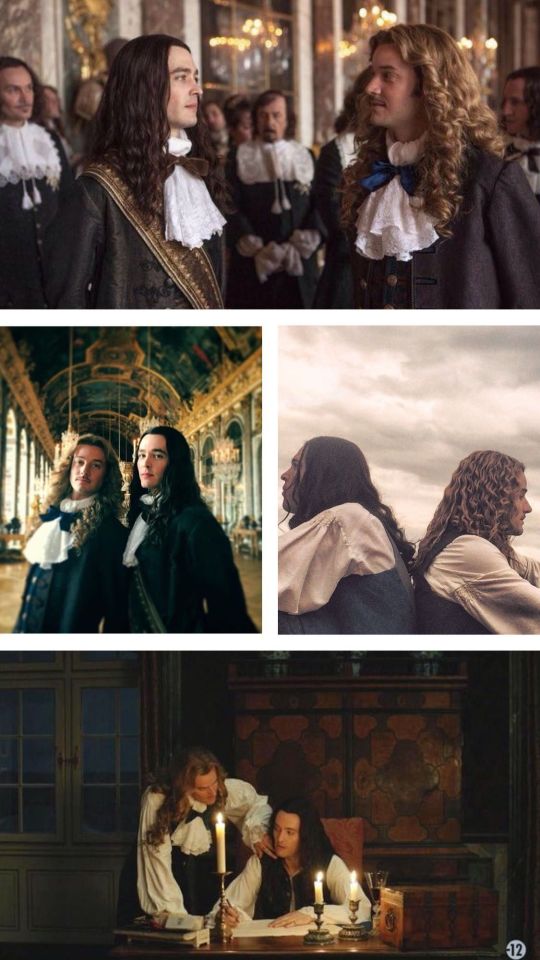
Ils portent de sublimes costumes et de magnifiques perruques, ils sont censés beaucoup aimer la mode, même si le Duc est moins coquet qu'il ne l'était dans la vraie vie.
Il y a plusieurs scènes absolument sublimes dans ce couple. La première qui me vient en tête c'est celle où le Duc et le Chevalier regardent le feu dans la cheminée après une dispute et le Chevalier pleure lorsqu'il dit qu'il préfère mourir plutôt que d'être détesté par l'homme qu'il aime. J'avais trouvé cela très beau de voir cet homme si confiant et dominant, qui protège son amant et se montre jaloux dès qu'il est avec un autre, confier ainsi ses sentiments avec sincérité.
Dans une autre scène, le couple est au Château de Saint-Cloud, demeure du Duc, et le Chevalier de Lorraine dit à Philippe d'Orléans : "Ton frère est peut-être le Soleil, mais toi, mon cher, tu es une étoile. Et si le soleil brille le jour, l'étoile éclaire nuit par sa brillance.".
Cette phrase est magnifique car on ressent l'admiration que le Chevalier éprouve pour son amant, qui est supérieur à lui en titre. Pourtant, Philippe aime obéir à son propre amant, comme s'il était sa femme. Je trouve cela très drôle et excitant.
Et puis, bien sûr, il y a la scène où ils se disent "Je T'aime" pour la première fois. D'habitude, je n'aime pas trop lorsque l'on en fait trop autour de la déclaration d'amour, mais ici je trouvais ça beau car ils savent qu'ils s'aiment, et ils en sont tellement conscients qu'ils n'ont jamais eu à se le dire, jusqu'à ce fameux moment qui est trop beau.
Monsieur et le Chevalier ne disent jamais qu'ils sont gay ou homosexuels (ces termes n'existaient pas au XVIIeme siècle) : ce sont juste des hommes, des personnes normales qui se trouvent être attirés par les hommes.
Enfin, pour terminer, les interprètes de MonChevy, Alexander Vlahos et Evan Williams, sont d'excellents acteurs. Ils sont aussi beau dans la vraie vie que dans la série. Ils sont devenus meilleurs amis dans la vraie vie, les voir aussi complices est trop mignon.

Ils sont d'ailleurs fier d'avoir joué un couple gay (car ils sont hétéros dans la vraie vie) et de l'avoir fait de manière naturelle. En effet, ils ont une vraie alchimie, notamment lors des scènes sexuelles ou de baisers.
J'espère qu'ils vont poursuivre leur carrière.
Voilà, j'espère que découvrir ce couple vous aura plu. Si vous le connaissiez, dites-le moi et j'espère que nous pourrons en discuter en commentaires. À bientôt pour de prochains couples gays 😘
☀️👑☀️👑☀️👑☀️👑☀️👑☀️👑☀️👑☀️👑
+++++++++++++++++++++++++++++++++++
🇺🇲🇬🇧 ENGLISH / ANGLAIS 🇬🇧🇺🇲
Today I am launching a new series of articles. After MOVIE/TV SERIES RECOMMENDATION, MAN OF THE DAY, and CHARACTER OF THE DAY, here is the first issue of GAY COUPLE OF THE DAY.
I am gay so inevitably I will talk about gay couples of fictional characters or not, but rather characters from films and television series (and perhaps books).
The two men forming the gay couple I will be talking about will not necessarily be gay themselves (for example there may be a gay couple with a bisexual man), but the idea is to talk about fictional couples that I appreciate, which inspires me and makes me dream. Maybe it will make you want to see the movies and TV shows they are from, like when I recommend TV shows or movies to you.
The couples I'm going to talk about aren't listed in order of preference.
🏳️🌈 GAY COUPLE OF THE DAY 🏳️🌈 #1 : MONCHEVY
Philippe of Orleans (Alexander VLAHOS) and Chevalier of Lorraine (Evan WILLIAMS) in the TV series Versailles (2015 - 2018)
Phillipe d'Orléans and the Chevalier de Lorraine are two main characters in the Versailles TV series. Composed of 3 seasons, the television series Versailles shows parts of the very long reign of Louis XIV of France (played by Georges Blagden). Each season has a different antagonist plotting against the King, and each season covers a different period of Louis XIV's reign.
We follow life at the Court, and all the characters revolve around Louis XIV. Well paced, very pretty to look at because the costumes and sets are rather historically faithful, the series invents several interesting characters to follow. On the other hand, with regard to historical figures, some are treated in a caricatural way, to see totally different from how they were in reality.
However, I could talk at length about the false things that the series invents, but I prefer to devote myself to one of the positive points of the series: the couple formed by Philippe d'Orléans and the Chevalier de Lorraine. They're the only gay couple on the show, but they appear in every episode, so they're very present.
When the series begins, the two men are supposed to have known each other for at least ten years and are already in love. For once, here is a gay couple who know each other and who love each other, we are not dealing with scenes where they get to know each other or seduce each other.
Alexander Vlahos plays Monsieur le Duc Philippe d'Orléans, younger brother of King Louis XIV. Evan Williams plays the role of Chevalier Philippe de Lorraine. Even if they have the same first name, the Chevalier (which mean "Knight" in English) is referred to as "Chevalier de Lorraine" for recognition.

These two men are historical figures, in any case the characters of the series are inspired by two people who really existed. Philippe d'Orléans (born in 1640, died in 1701) is the youngest son of Louis XIII of France and Anne of Austria, he is therefore the brother of Louis XIV. Chevalier Philippe de Lorraine (1643 - 1702) is a French nobleman, he met Prince Philippe around 1658. The series begins around 1668, so they have known each other for about ten years and Philippe d'Orléans is supposed to be 27 years old, the Chevalier Philippe de Lorraine is 24.
In Season 1, the Knight plots to make his lover Philippe the new King of France. He joins forces with other nobles to depose the King, and his situation becomes very complicated. For his part, the Duke of Orleans (aged 28 to 30) faces the jealousy he feels for the King.
In season 2, the Chevalier de Lorraine returns from exile and finds himself involved in the Affair of Poisons: it is a resounding scandal in the 1670s because French nobles were accused of consuming poisons bought from sorcerers and witches. As for Philippe d'Orléans (about 30 to 40 years old), he finally had more and more political importance at Court.
Finally, in the third and final season, Philippe (who is between 40 and 44 years old) will investigate the identity of the man in the iron mask, and the Chevalier de Lorraine gets closer to a fictional Protestant nobleman at a time where the King has the Protestants of the court arrested if they do not convert to Catholicism. During season 3, the couple moves away but ends up getting closer, for our greatest pleasure.
I wrote the age that Philippe d'Orléans is supposed to be in each season except that there is no date given in the series, and the characters age little. In the television series as in historical reality, the Chevalier de Lorraine had many problems with the two wives of Monsieur le Duc d'Orléans. In the first season, he does everything to make unhappy Henriette Stuart of England, cousin and first wife of Philippe d'Orléans. In the second season, he starts over with the Duke's new wife, Elisabeth-Charlotte of Bavaria (nicknamed Liselotte).
However, contrary to historical reality, the Chevalier and Liselotte end up getting along rather quickly, and even become friends. In real life, they waited four years before the death of the duke to finally make peace. The trio formed by the Duc d'Orléans, the Duchess and the Chevalier is really very funny and very ambiguous.

The Chevalier de Lorraine is a tall, muscular blond man and the Duke is dark-haired. They are very different especially in personality and attitude.
Monsieur le Duc Philippe d'Orléans is a prince who likes to dress up as a woman, even if it only happens a few times in the television series. He is supposed to have been raised as a girl by his mother in order to make him weak and submissive. Indeed, he spent his time devoting himself to fashion and frivolities. What is good in the Versailles series is that the complexity of Philippe d'Orléans is shown. Indeed, he was certainly effeminate and frivolous, spending a lot of time dancing and sleeping with his lovers, but he was also a great patron, and above all a valiant warrior who won several battles to the point of overshadowing his brother the King. In the series Versailles, what makes him complex and interesting is his relationship with his brother, but let's come back to his relationship with the Chevalier de Lorraine.
Both are very close to each other, but it is especially the Knight who is jealous. He's not married so he doesn't like seeing the Duke spending time with his wives. He is very protective of his lover, and plots to make him king. Monsieur le Duc Philippe was indeed more popular than the King because he spent more time in Paris than in Versailles.
The Chevalier is an exuberant man, who likes to show off and displays his superiority. He is manipulative and arrogant, but he hides a desire to be loved for who he is. So, what makes the beauty of this couple is that they are really made for each other. Time and politics sometimes keep them apart (and the sometimes cheat on each other), but they end up finding each other because they love each other.
In historical reality, some historians believe that the Duke of Orleans was sincerely in love with the Chevalier de Lorraine, but that he was not in love and used him to obtain favors. Yet he was a warrior whom the king used to manipulate his own brother. In the series, Duke Philippe evolves, because he is first dominated and manipulated by the Knight, and he ends up no longer depending on his lover.

What is good is that it is a couple that could have existed today. They are gay but they sometimes sleep with women, they are ambitious and lead a career on their own but sometimes helping each other. They argue, sleep with other people, but get together.
The couple formed by the Duke of Orleans and the Chevalier of Lorraine marked the history of homosexuality because they are among the rare nobles to have been able to display their sexuality without being punished by the law or the gaze of society. At the French court, you had to be noble to be able to have a free sexuality, despite the weight of the Church.
The real Chevalier of Lorraine was also much more cruel than his fictional counterpart: he would have murdered a young waffle merchant who would have refused to sleep with him. Later, he created a brotherhood of homosexual nobles whose emblem was a man crushing a woman. The Knight and the other lovers of the Duke of Orleans raped a young gay nobleman, the Duke of Vermandois (son of Louis XIV and his mistress Louise de La Vallière). In short, life at Court was undoubtedly cruel.
The Chevalier de Lorraine was therefore reputed to be a magnificently handsome man who was ready to do anything to get money and titles. In the series, he is endearing despite his arrogance, and is one of the funniest characters (he makes lots of jokes).
The Duke of Orléans and the Chevalier de Lorraine share the same first name, but they really understand each other, have common desires. They are both handsome young men and are attracted to each other's bodies, besides having many very exciting and explicit sex scenes. It would seem that the Duke was a bottom with the Chevalier but sometimes a top with his other lovers.
At the end of his life, the Chevalier retained the favor of the Duke of Orléans by providing him with handsome young men to sleep with. However, they were in a relationship for a long time (about forty years), and the television series show that they were happy together. They kiss in almost every episode (when they're a couple, not when they're supposed to be arguing).

They kiss in almost every episode (when they're a couple, not when they're supposed to be arguing). I also link you to a YouTube channel which has compiled the moments when the MonChevy couple appears (nickname which is a contraction of Monsieur and Chevalier, the titles of the two Philippes).
They both like fashion and wears amazing costumes, even if the Duke likes fashion less in the TV series that in the historical reality.
There are several absolutely sublime scenes in this couple. The first that comes to mind is the one where the Duke and the Knight watch the fire in the fireplace after an argument and the Knight cries when he says he would rather die than be hated by the man he likes. I had found it very beautiful to see this man so confident and dominating, who protects his lover and is jealous as soon as he is with another, thus entrusting his feelings with sincerity.
In another scene, the couple are at the Château de Saint-Cloud, residence of the Duke, and the Chevalier de Lorraine says to Philippe d'Orléans: "Your brother may be the Sun, but you, my dear, you are a star. And if the sun shines by day, the star lights up the night with its brilliance."
This sentence is magnificent because we feel the admiration that the Knight feels for his lover, who is superior to him in title. However, Philippe likes to obey his own lover, as if he were his wife. I find it very funny and exciting.
And then, of course, there's the scene where they say "I love you" to each other for the first time. Usually, I don't like too much when we do too much around the declaration of love, but here I found it beautiful because they know that they love each other, and they are so aware of it that they have never had to tell each other, until this famous moment which is too beautiful.
Monsieur and Chevalier never say that they are gay or homosexual (these words didn't existed at the 17th century) : they are just men, just normal people login other men.
Finally, to conclude, the interpreters of MonChevy, Alexander Vlahos and Evan Williams, are excellent actors.

They are as beautiful in real life as they are in the series. They have become best friends in real life, seeing them as complicit is so cute. They are also proud to have played a gay couple (because they are straight in real life) and to have done so in a natural way. Indeed, they have a real chemistry, especially during sexual scenes or kisses. I hope they will continue their career.
There you go, I hope you enjoyed discovering this couple. If you know him, let me know and I hope we can discuss it in the comments.
See you soon for future gay couples 😘
☀️👑☀️👑☀️👑☀️👑☀️👑☀️👑☀️👑☀️👑
++++++++++++++++++++++++++++++++++
LINK OF THE YOUTUBE CHANNEL with MonChevy gay storyline in videos (season 1)
LIEN DE LA CHAÎNE YOUTUBE avec l'histoire de MonChevy en vidéos (saison 1)
youtube
@monchevy-versailles @monchevy-rainbow-over-versailles @monchevybabies @monchevylove @versailles-gifs @chevalier-de-lorraine @philippedorleansversailles @gayhopefullove @awesomecrowdcontrol1 @gaycharaoftheday @periodfilmsanddrama @perioddramaedits @perioddrama @rainykpoptravelcreator @gaycouple4u @loveisloveok @love-for-boys @torinya @emerldarchr @alexandervlahossource @alexandervlahosfr-blog
#Couple gay du jour#Personal post#Post personnel#Gay history#History#Histoire#Chevalier de Lorraine#Duc d'Orléans#Roi#King#French history#Histoire de France#Gay couple#Couple gay#TV series#Versailles#Série télévisée#Personnage historique#Personnage fictif#Fictional character#Review#Historical figure#Recommendation#Monchevy#Celebrity#Célébrité#Actor#Evan Williams#Alexander Vlahos#Gay couple of the day
19 notes
·
View notes